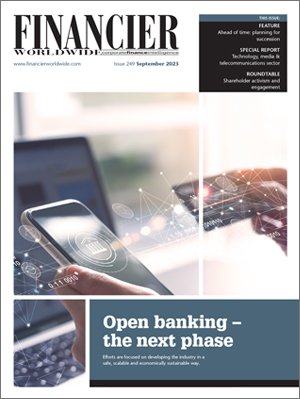AI in e-discovery
September 2023 | FEATURE | LITIGATION & DISPUTE RESOLUTION
Financier Worldwide Magazine
Discovery can be a complex, tedious process to complete manually. In the past, lawyers had little choice but to read every individual document. Today, discovery goes well beyond just paper documents. It requires legal teams to consider communications across a vast range of platforms and mediums. This includes the disclosure and analysis of emails, text messages, WhatsApp messages, videos, telephone calls and more – communications involving potentially hundreds or even thousands of individuals.
To counter this, the integration of artificial intelligence (AI) to automate document review offers lawyers greater efficiency, in terms of both time and cost, with its ability to process large amounts of data quickly and accurately. AI has been a feature of e-discovery for at least the past decade. Its capabilities have improved and broadened during this time – and that process continues.
AI automates the otherwise mundane, repetitive and time-consuming tasks associated with discovery, while improving accuracy. This, in turn, frees up time for legal advisers to focus on more strategic, problem-solving work. Reducing the number of billable hours required for discovery on a case can reduce client costs and allow lawyers to expand their workload.
According to Jordan C. Blumenthal, counsel at Redgrave LLP, over the last several years technology-assisted review (TAR) has moved beyond basic predictive coding workflows, sometimes called TAR 1.0, in which attorneys train an algorithmic model to rank documents for responsiveness before review begins in earnest. “Those workflows significantly increased efficiency by allowing for attorney-informed automated prioritisation of large document sets and defensible productions without 100 percent eyes-on review,” he explains. “That process can still be useful in certain cases, for many of the same reasons.
“AI automates the otherwise mundane, repetitive and time-consuming tasks associated with discovery, while improving accuracy.”
“But newer workflows that employ continuous active learning – or TAR 2.0 – allow for even greater efficiency and accuracy in many cases by largely eliminating the need to spend significant time training the model at the outset, allowing review to begin immediately, and integrating new information over time such that the model adapts to developments in a case. Attorneys that are educated and comfortable with TAR 2.0 workflows can often save their clients significant time and money,” he adds.
Beyond this, AI can also be utilised for sentiment analysis, which utilises natural language processing (NLP), machine learning and AI to determine the sentiment, opinion or emotion used in text. The software forensically scans through documents sentence by sentence, searching for indicator words that represent certain sentiments and then highlighting emotions.
This process can be combined with concept clustering. After data has been categorised into themed groups, it is further analysed to seek sentiments within each cluster. While human oversight is necessary for the most accurate results, sentiment analysis is a powerful tool which can improve e-discovery.
AI can also play a role in protecting sensitive data during e-discovery. For instance, it can redact personal information and check whether all documents under attorney-client privilege have been identified. This is particularly relevant following developments in data protection jump started by the EU’s General Data Protection Regulation.
Areas to address
At present, however, deployment of AI in e-discovery is less prevalent than it could be. “One of the most significant obstacles is the one faced by all new technologies in the law: attaining critical mass for acceptance,” says Mr Blumenthal. “For instance, although practitioners and even some courts have touted the value of TAR for a decade or more, litigators still often face pessimism and distrust of anything less than 100 percent eyes-on review.
“Given this challenging background, there is a distinct need for lawyers who not only understand these new technologies, but who can also explain their mechanisms, and their worth, in terms non-experts can appreciate. Lawyers and technical experts working closely together can build on each other’s strengths to educate and benefit clients and courts, and to advance the profession’s acceptance of new technology,” he adds.
For Mr Blumenthal, there are also pressing questions around how OpenAI’s ChatGPT, or other
large language models (LLMs), may give rise to unethical misuse.
“Some lawyers have already found themselves in hot water after using such services and discovering too late that chatbots can invent information that sounds very real,” he says. “Beyond the occasional lying chatbot, though, lawyers also need to be wary of other ethical pitfalls presented by their professional use of AI. For example, a publicly available chatbot may well scoop up and retain any client information a guileless lawyer offers it, and could even potentially spit that confidential or even privileged client information out to a third party if given precisely the right user prompt.
“None of these ethics concerns are new, they are just new applications of the rules requiring truthfulness and confidentiality,” he continues. “Still, another long-established ethical obligation is to maintain the knowledge and skill necessary to represent a given client, particularly in sizeable, sophisticated litigation and transactions. That expertise increasingly requires not just an understanding of but an ability to harness the full gamut of AI’s potential.”
Although AI does have limits, it is set to impact virtually every sector in the global economy. As a tool for conducting e-discovery, when correctly utilised, it can offer several advantages to legal professionals. But there is a need for greater awareness, understanding and experience across the legal community to accelerate adoption and fully unlock its power.
© Financier Worldwide
BY
Richard Summerfield


